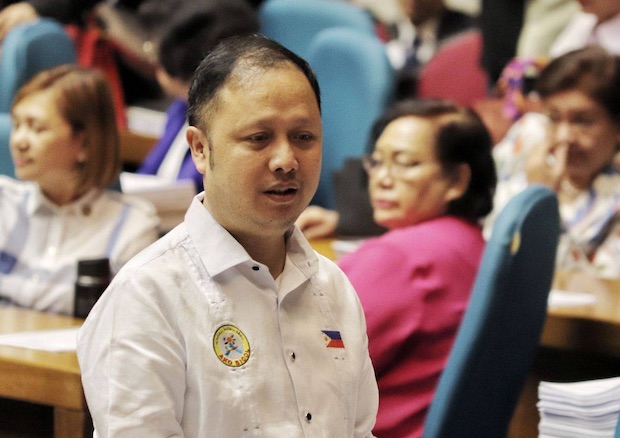
Ako Bicol Rep. Elizaldy Co (Photo from his Facebook account)
MANILA, Philippines — A water system harnessing solar energy to supply households can be the solution to the country’s looming crisis while ensuring that the environment is protected, Ako Bicol Rep. Elizaldy Co said.
Co, in a statement, said that such a system is already available in Bicol Region, where solar power was deemed sufficient to provide water supply to “rural, upland, and poor communities” in the area.
The lawmaker, who heads the House Committee on appropriations in charge of crafting the annual national budget, said this after Finance Secretary Benjamin Diokno admitted that the country may face a water crisis by 2040.
“I firmly believe that access to clean and safe water is a basic human right. We cannot afford to wait until 2040 to take action,” Co said on Monday.
“We must act now to address the water crisis and ensure that every Filipino has access to safe and clean water,” he added.
Co was referring to a recent statement from Diokno where the Finance secretary urged local government units to invest in potable water systems using the revenues they receive due to the Mandanas-Garcia ruling.
Diokno said this is needed to address current water supply issues but at the same time, avoid a crisis in the future.
READ: Diokno urges local governments to invest in potable water systems
According to Co, local governments can adopt a system, where solar energy is used to pump and distribute the water from the station to the households. Aside from ensuring a continuous water supply, Co said it would allow water cooperatives to explore cleaner means to distribute water, as most systems rely on diesel fuel — a non-renewable source of energy.
“We must prioritize water security, especially in areas that are most vulnerable to the effects of climate change. The solar-powered water supply system is just one of the many solutions that we can implement to ensure access to clean and safe water for all,” he said.
Co said that 19th Congress’ House of Representatives, led by Speaker Ferdinand Martin Romualdez, had allocated P10 billion in 2023 for this exact system, incorporate under the Department of Public Works and Highways (DPWH). The system would be based on the one used by the party-list group.
Several areas in the country, particularly those near Metro Manila have experienced water shortages in recent years, as the Angat Dam can no longer address the needs of a growing population in the metropolis.
A lot of observers and experts have suggested that the government push through with the construction of the Kaliwa Dam in Quezon province, but this has been opposed by pro-environment groups that insist the structure would trample on the ancestral domain of indigenous people in the area.
READ: ‘False consent,’ priest says of Kaliwa Dam OK
The groups also claim that the Kaliwa Dam would only cause flooding.
However, the possibility of an El Niño season in the country raised discussions on Kaliwa Dam, as the droughts may lead to fewer rains during the dry season.
READ: Kaliwa Dam should be finished ASAP
Just this May 2, the Philippine Atmospheric, Geophysical and Astronomical Services Administration announced that there is an 80 percent possibility that El Niño may emerge between June to August 2023, and last until the early part of 2024.
The active phase of the El Niño-Southern Oscillation (ENSO) is characterized by above average sea surface temperatures in the central and eastern equatorial Pacific Ocean, causing dry spells and droughts in affected Pacific-area countries like the Philippines.
RELATED STORIES:
Pagasa: Probability of El Niño now at least 80%
El Niño Watch: Alert raised; Pagasa predicts hotter days from June to August